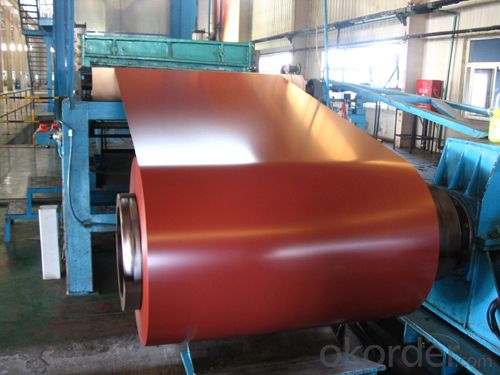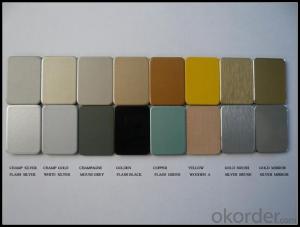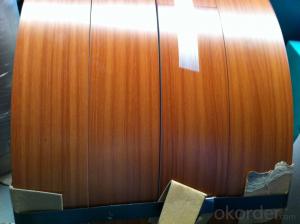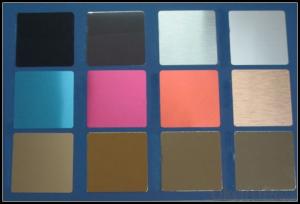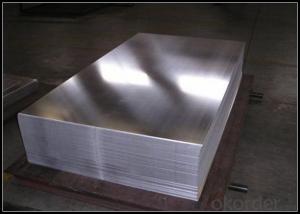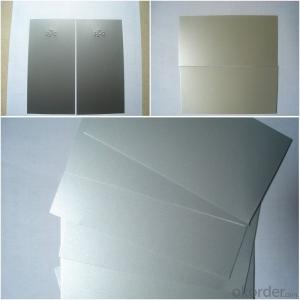Aluminum Perforated Sheets for PVDF Coated Wall Curtains
- Loading Port:
- Shanghai
- Payment Terms:
- TT OR LC
- Min Order Qty:
- 5 m.t.
- Supply Capability:
- 5000 m.t./month
OKorder Service Pledge
OKorder Financial Service
You Might Also Like
Specification
1.Structure of Aluminium Coils for PVDF Coating Wall Curtainer
Aluminium Coils for PVDF Coating Wall Curtainer can be rolled down to aluminium coil,sheet,circle ect. The alloy AA1050 is widly used in building, industry ect. Its weight is much lower than steel. So many customers choosed aluminium material instead of steel.
2. Main features of Aluminium Coils for PVDF Coating Wall Curtainer
a.Competitive price---We have our own mills and can produce mill finished aluminium coils, so we can control the production cost better.
b.Professional after-sale service---We have more than 15 years exportation experience and you need not worry about the exporation problems.
c.Fast delivery time---We can control the delivery time within 35 days.
3. Image of Aluminium Coils for PVDF Coating Wall Curtainer
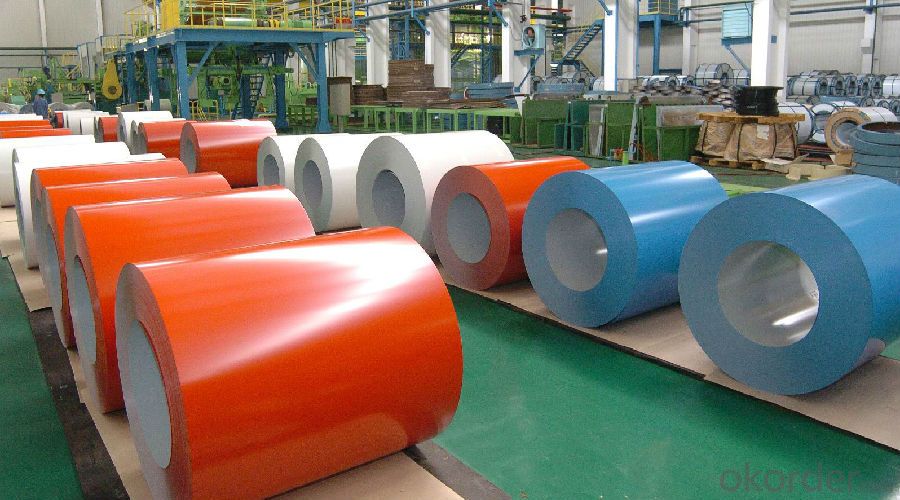
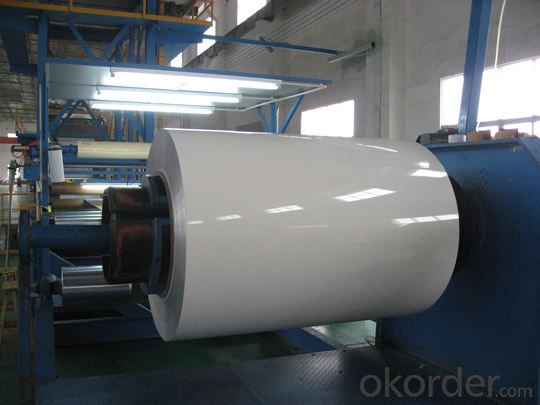
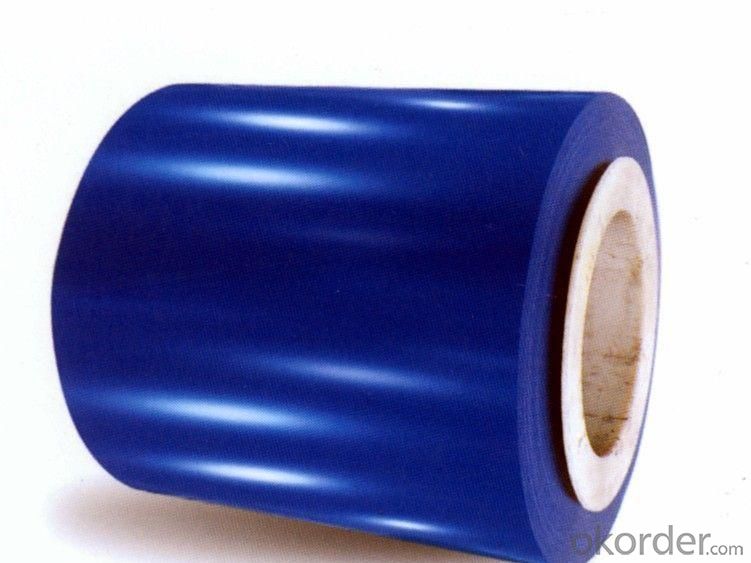
4. Product Specification of Aluminium Coils for PVDF Coating Wall Curtainer
| Alloy | Temper | Thickness | Width | Weight |
| AA1050 | H14 | 0.2-3MM | 1000-1800MM | 2 tons |
5.FAQ of Aluminium Coils for PVDF Coating Wall Curtainer
What is the quality standard?
---Usually our standard is GB3880-2006
What is the largest width?
---It is 2300mm
What is the MOQ?
---Usually we can accept 80 tons.
- Q: What are the different types of surface treatments available for anodized aluminum sheets?
- For anodized aluminum sheets, there exists a range of surface treatments that can enhance the appearance, durability, and functionality of the material. One option is the brushed finish, which involves using abrasive materials to create parallel lines on the sheet. This technique gives the aluminum a matte appearance and effectively conceals scratches and fingerprints. Another treatment is the mirror finish, achieved through polishing the sheet to create a high gloss, mirror-like reflection. This finish is commonly used for decorative purposes and provides a sleek and modern look. Etching is a process in which chemicals or abrasives are used to remove a thin layer of the anodized coating, creating a textured or patterned design on the sheet. This technique allows for customization and unique aesthetics. Powder coating is a popular treatment in which a dry powder is electrostatically applied to the anodized aluminum sheet and then cured under heat. This creates a durable and customizable coating in terms of color, texture, and finish. For a smooth, brushed appearance, satin finish involves sanding the aluminum sheet with fine grit sandpaper. This finish gives the surface a subdued and elegant look. Mechanical finishes encompass various techniques like polishing, buffing, or grinding to achieve different textures and finishes. The final result can range from smooth and glossy to rugged and textured, depending on the desired effect. Chemical treatments such as anodizing, chromating, or chemical brightening can enhance the corrosion resistance, color, and overall appearance of the aluminum sheet. They also improve the adhesion of paints or adhesives to the surface. It is important to consider that the availability of these surface treatments may vary depending on the manufacturer and specific requirements. Consulting with the supplier or manufacturer is recommended to determine the most suitable treatment for your application.
- Q: Are aluminum sheets suitable for electrical connectors?
- Yes, aluminum sheets are suitable for electrical connectors due to their excellent electrical conductivity and corrosion resistance.
- Q: What is the main influence of the spacing?What are the main effects of spacing?
- Thermal explosion is related to a lot of factors. As to how much impact the lining board has on the thermal explosion, it's really impossible to speak of it. I think it has very little influence
- Q: Can aluminum sheets be used for architectural cladding?
- Yes, aluminum sheets can be used for architectural cladding. Aluminum is a popular choice for cladding due to its durability, lightweight nature, and resistance to corrosion. It is commonly used in both residential and commercial buildings for its aesthetic appeal and versatility in various architectural designs.
- Q: How do aluminum sheets perform in terms of wear resistance?
- Aluminum sheets have good wear resistance due to their natural ability to form a protective oxide layer on their surface. This oxide layer helps to prevent corrosion and wear, making aluminum sheets suitable for various applications requiring durability and resistance to wear.
- Q: Can aluminum sheets be used for balcony railings?
- Yes, aluminum sheets can be used for balcony railings. Aluminum is a popular material for balcony railings due to its lightweight nature, durability, and resistance to corrosion. It is a versatile material that can be easily formed into different shapes and designs, making it suitable for various architectural styles. Additionally, aluminum railings require minimal maintenance and can withstand harsh weather conditions, making them a practical and long-lasting choice for balcony railings.
- Q: Can aluminum sheets be formed into seamless tubes or pipes?
- Seamless tubes or pipes can indeed be created from aluminum sheets. This is commonly achieved by employing a technique known as extrusion, in which the aluminum sheet is heated and compelled through a die to acquire the desired form. The extrusion process enables the production of seamless tubes or pipes that possess uniform dimensions and a polished surface. Due to its exceptional versatility and malleability, aluminum is an ideal material for numerous applications necessitating lightweight and corrosion-resistant tubing.
- Q: What are the standard thicknesses for aluminum sheets utilized in construction?
- <p>Yes, there are standards for the thickness of aluminum sheets used in construction. These standards vary by country and application. In the United States, the Aluminum Association sets standards, such as AA 3003-H14, which is commonly used in construction for thicknesses ranging from 0.020 to 0.250 inches. In Europe, EN 485-2 covers the specifications for aluminum sheet thicknesses. Thicknesses can range from 0.4mm to 6.0mm, depending on the specific requirements of the construction project. It's important to consult the relevant standards for the region and application to ensure compliance and proper material selection.</p>
- Q: who knows the ceiling technology of aluminum sheet?
- Construction technology of ceiling aluminum sheet: (1) firstly check keel’s quality, the straight shape and uniformly forced state of boom, control the keel’s gap within 500mm, reduce the gap according to design requirement under humid environment. The lower surface of keel is smooth without a sense of bearing down, main device is closely connected with accessories, it can be bound after being confirmed qualified.(2) we should break the board along the cutting line and ensure the margin of cutting board straight and square without any chipping or arris defect. (3) while placing and fixing the board, we can place edge of aluminum-plastic panel(encapsulated edge) in the vertical direction of supporting keel, there is a phenomena of hanging. Aluminum-plastic panel should be placed closely in the process of butt joint, it can’t be pressed. You can start from a plate angle or middle position, and don’t place them at the same time. Slab joint should be straight and in the same width, without break joint. (4) in the process of joint, Aluminum-plastic panel should be placed closely in the process of butt joint, it can’t be pressed. And the butt joint should be stagger, the butt joint can’t be connected on the same keel. When you use doubling plate, the joints of the second layer board and the first layer board can’t be connected with the same keel, double-deck gypsum board should be staggered joints.
- Q: Are aluminum sheets suitable for solar panel applications?
- Yes, aluminum sheets are suitable for solar panel applications. Aluminum is a lightweight and durable metal, making it an ideal material for constructing the frames of solar panels. Its corrosion resistance ensures that the panels can withstand outdoor conditions and last for a long time. Additionally, aluminum has a high thermal conductivity, allowing it to dissipate heat effectively, which is beneficial for solar panels as they generate heat during operation. Moreover, aluminum is a highly recyclable material, aligning with the environmentally friendly nature of solar energy. Overall, aluminum sheets are a reliable and practical choice for solar panel applications.
Send your message to us
Aluminum Perforated Sheets for PVDF Coated Wall Curtains
- Loading Port:
- Shanghai
- Payment Terms:
- TT OR LC
- Min Order Qty:
- 5 m.t.
- Supply Capability:
- 5000 m.t./month
OKorder Service Pledge
OKorder Financial Service
Similar products
Hot products
Hot Searches
Related keywords





